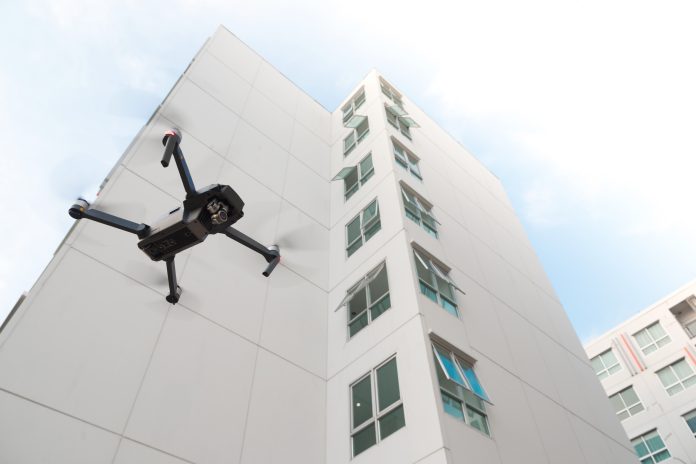While drones or unmanned aerial vehicles (UAVs) have prompted significant controversy over privacy rights, they are quickly becoming essential to the commercial real estate sector- and it’s not for the reasons you might think. ?
No doubt that stunning aerial videos of property sites have their own marketing value, but UAVs are increasingly being used by commercial estate investors and property owners to reduce significant inspection and maintenance costs, especially in high-rise commercial office buildings.
According to Goldman Sachs research, the market for UAVs is expected to reach $100 billion by 2020 with the fastest growth coming from businesses and city governments. The highest industry function by far is construction, which is expected to reach $11.1 billion by 2020 and their use in the real estate sector is expected to be $265 million by 2020.

Inspecting exteriors of commercial and residential high-rise buildings is one the most difficult and dangerous tasks which if left unchecked can lead to costly failures. Drones are capable of scanning the surface of a building in a sliver of the time required to inspect a building manually which substantially reduces costs.
Using drones compared with having to erect scaffold can save more than 80% in cost, in one example the cost of a drone inspection was $1,000 compared with $10,000 for a manual inspection which required scaffolding and laborers.
Further remote-controlled drones reduce the risk of loss of human life related to manually inspecting the exterior walls of high-rise buildings – a method until now which required an inspector to repel down the side of the building with ropes and as a result reducing the exposure for building owners.
Drones are also better at hovering over the intricate architecture and odd angles in modern high rise buildings to check specific areas for potential problems, such as exterior leaks and cracks and are much better at finding damage than the human eye.
Developers and investors are also increasingly using UAVs to survey and map a property to determine how to develop land area best or identify groundwater locations using infrared imaging in a fraction of the time and money expended in existing mapping technologies.
UAVs are also being used to monitor large construction sites to make sure that work is being done per building codes and developer plans. The real-time visual updates during construction phases enable contractors and architects to catch mistakes immediately preventing sunk costs or need to re-do things again.
Following FAA guidelines and find making sure that you seek a skilled vendor and pilot who can operate the drone in urban environments is essential. ?While privacy concerns are expected to dissipate soon, drones are still restricted in some metropolitan areas.?
However, as the investment in the technology continues to grow FAA policies regarding inspections are also starting to change. ?For example, Industrial Skyworks, a Canadian-based company has been allowed to carry out nighttime drone inspections of walls and roofs to accurately track energy escaping from the buildings.

